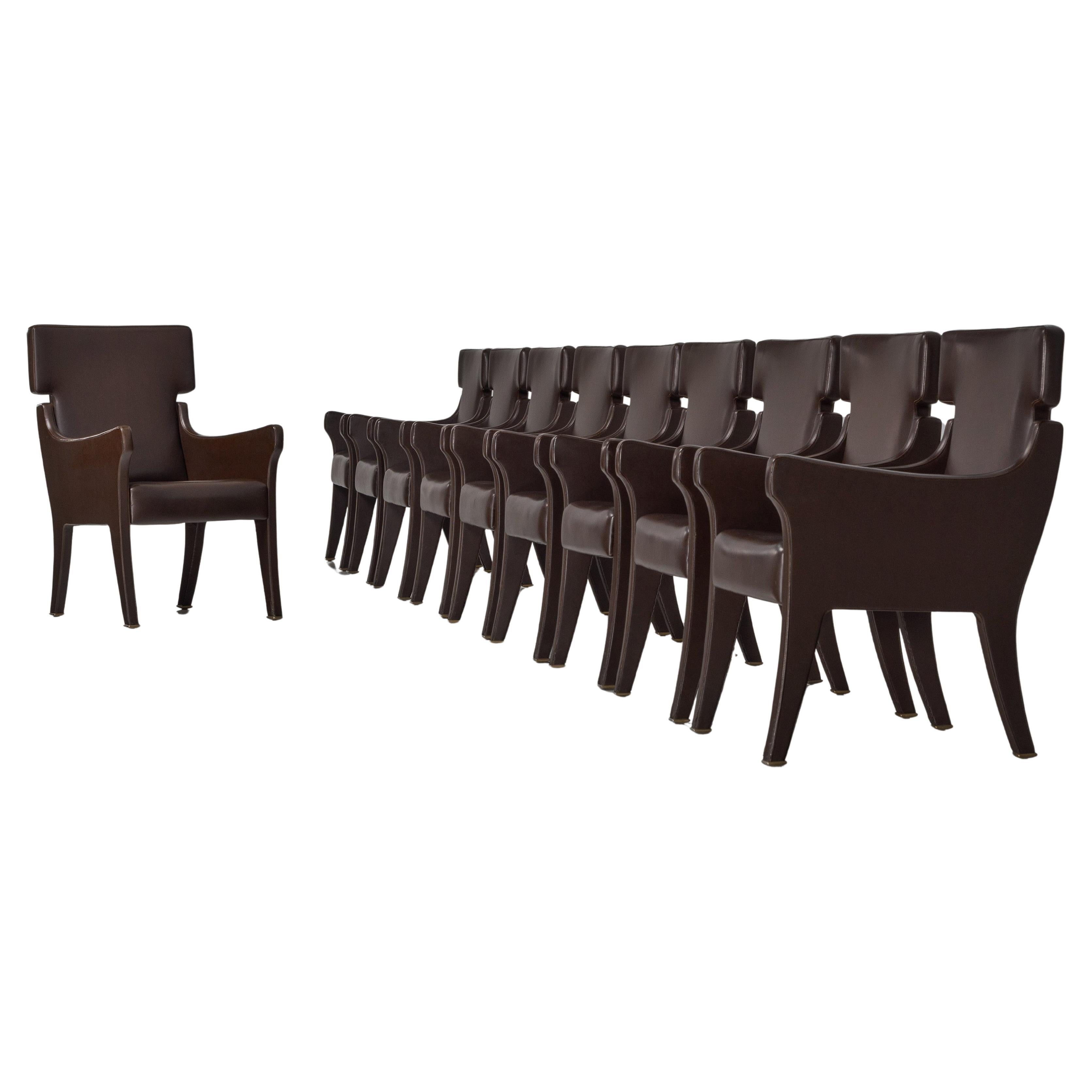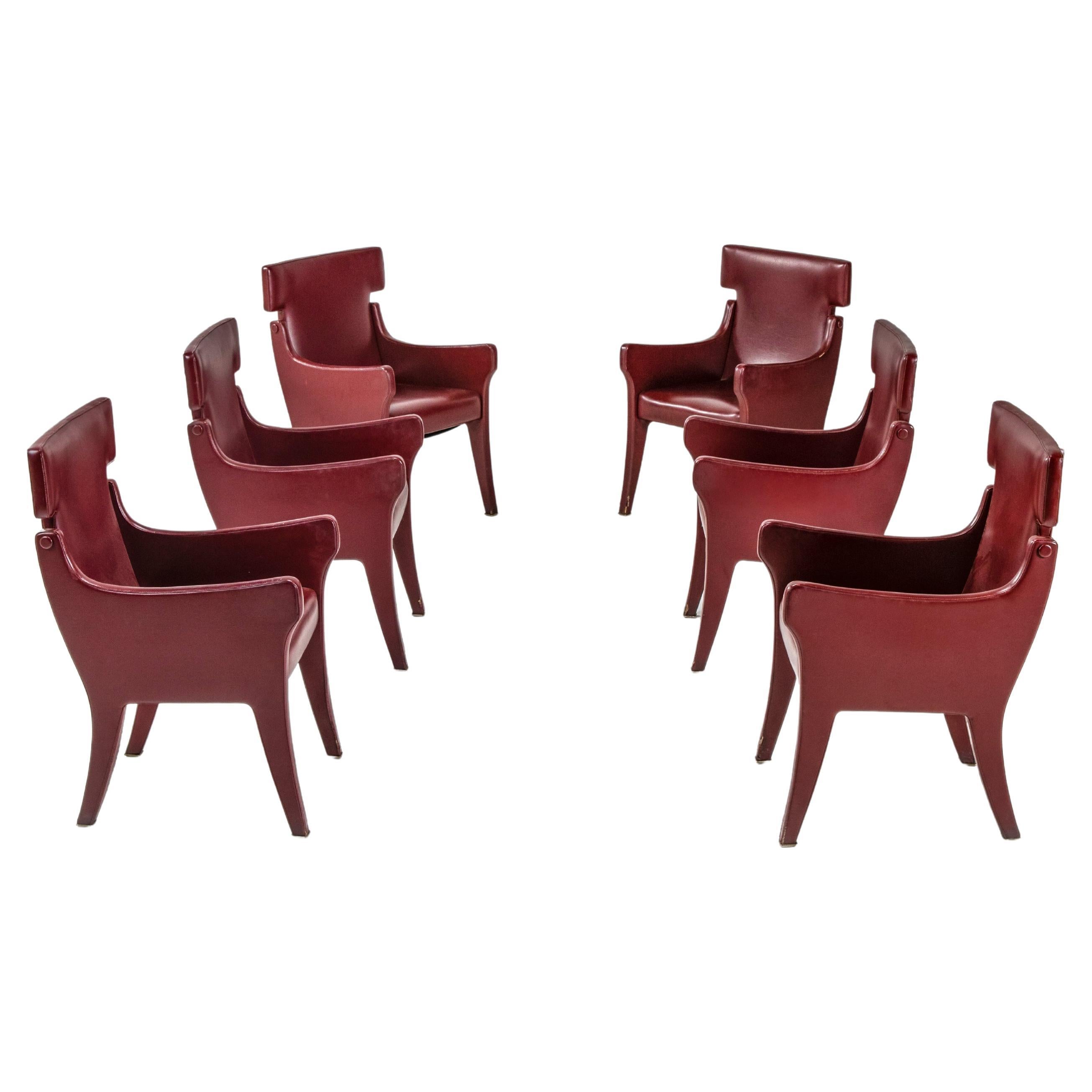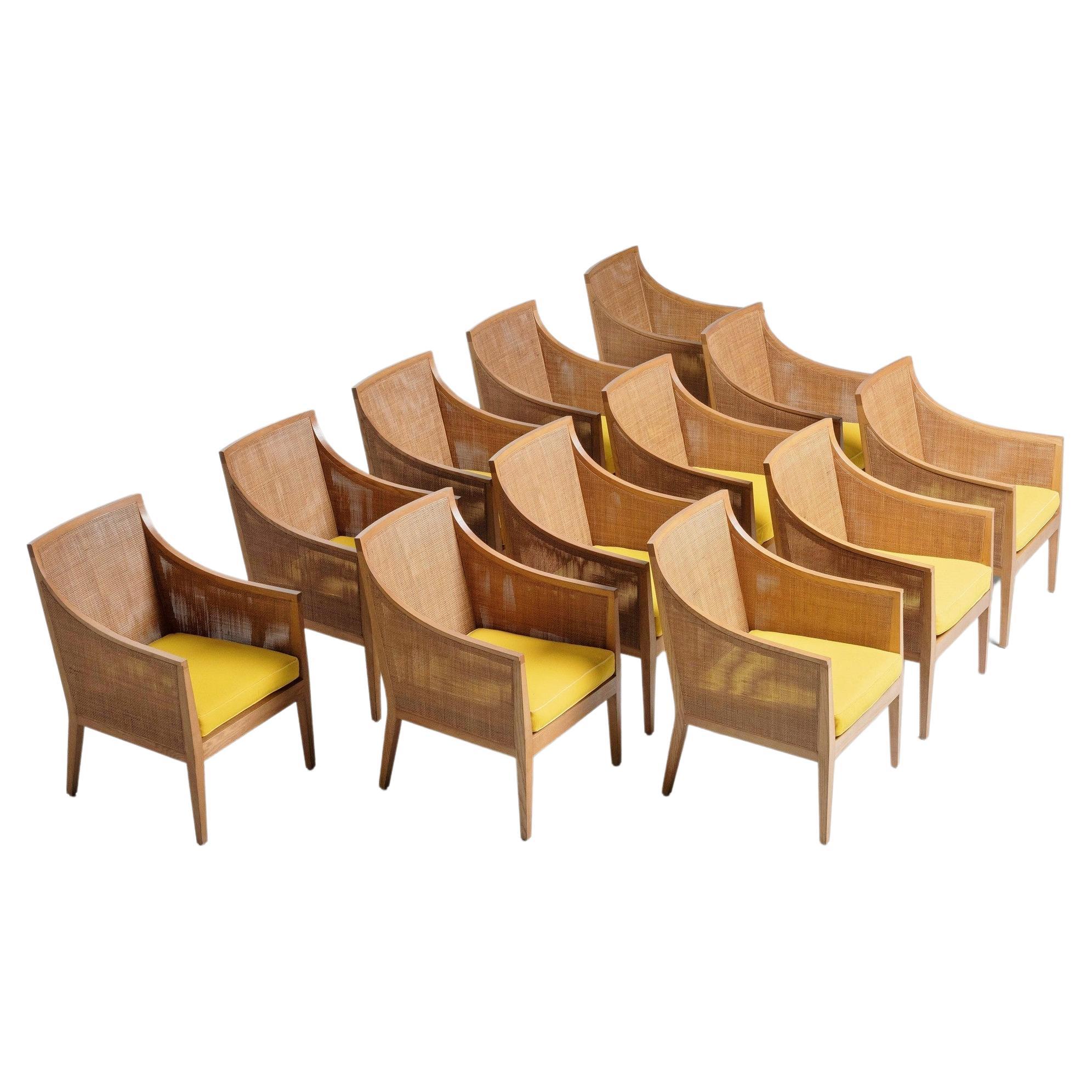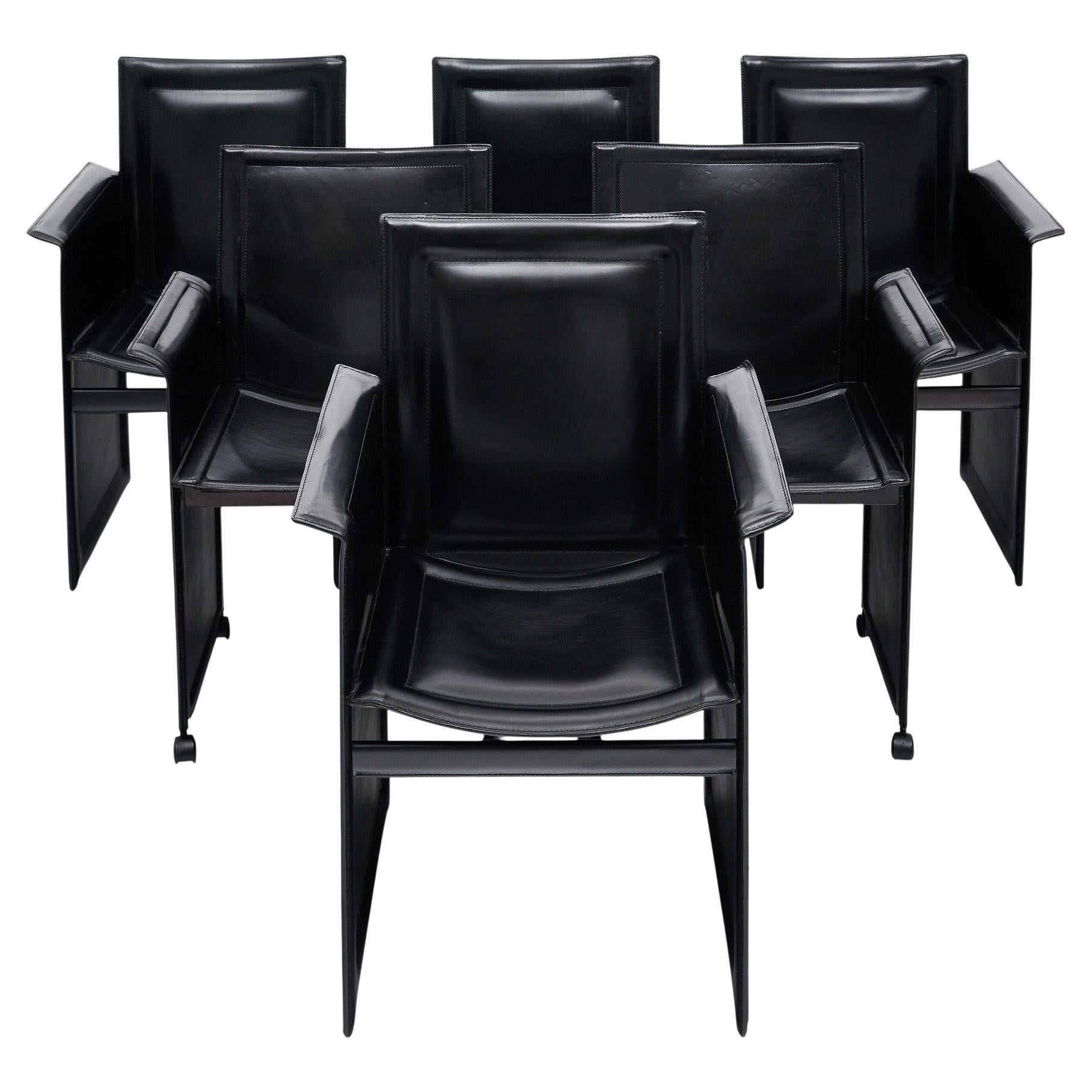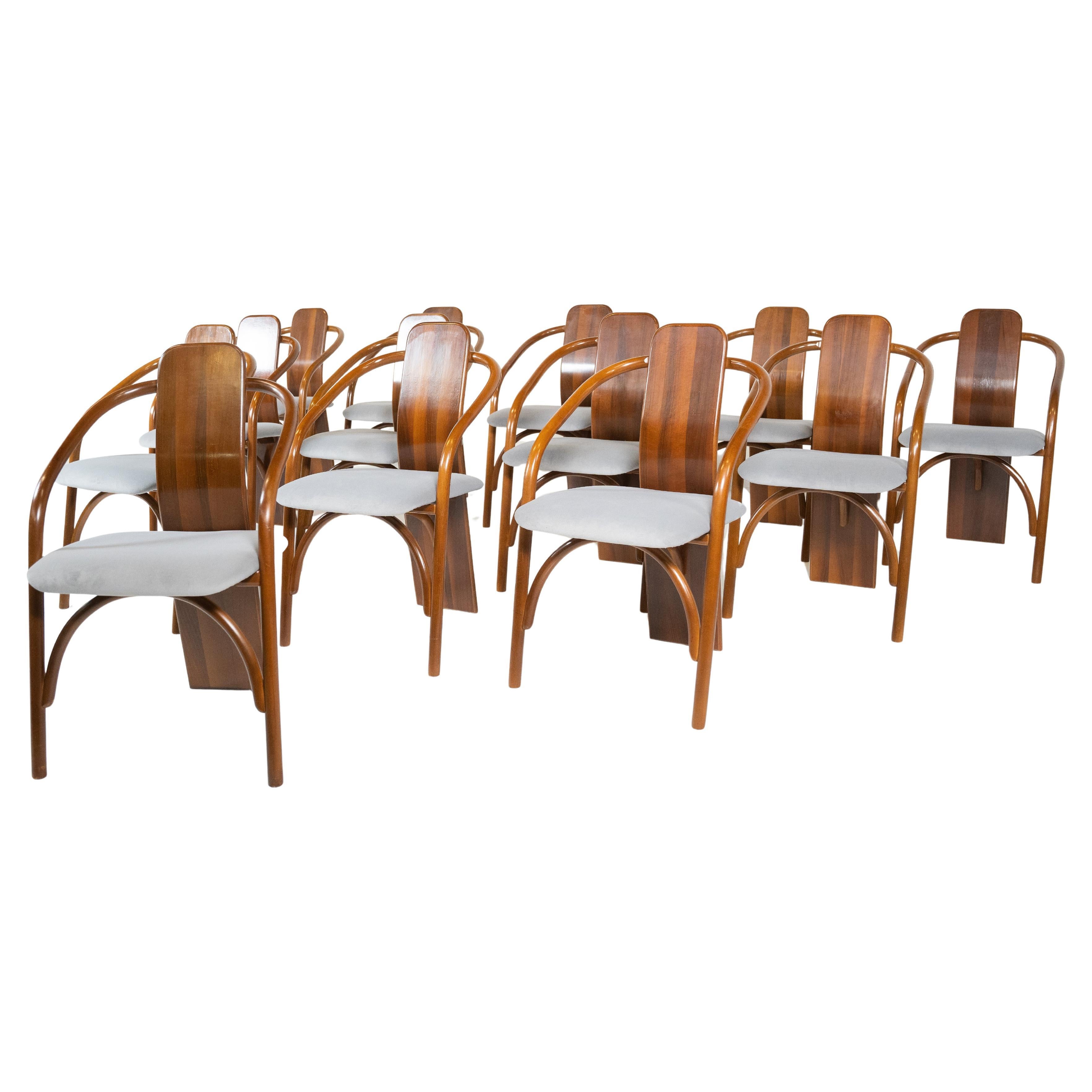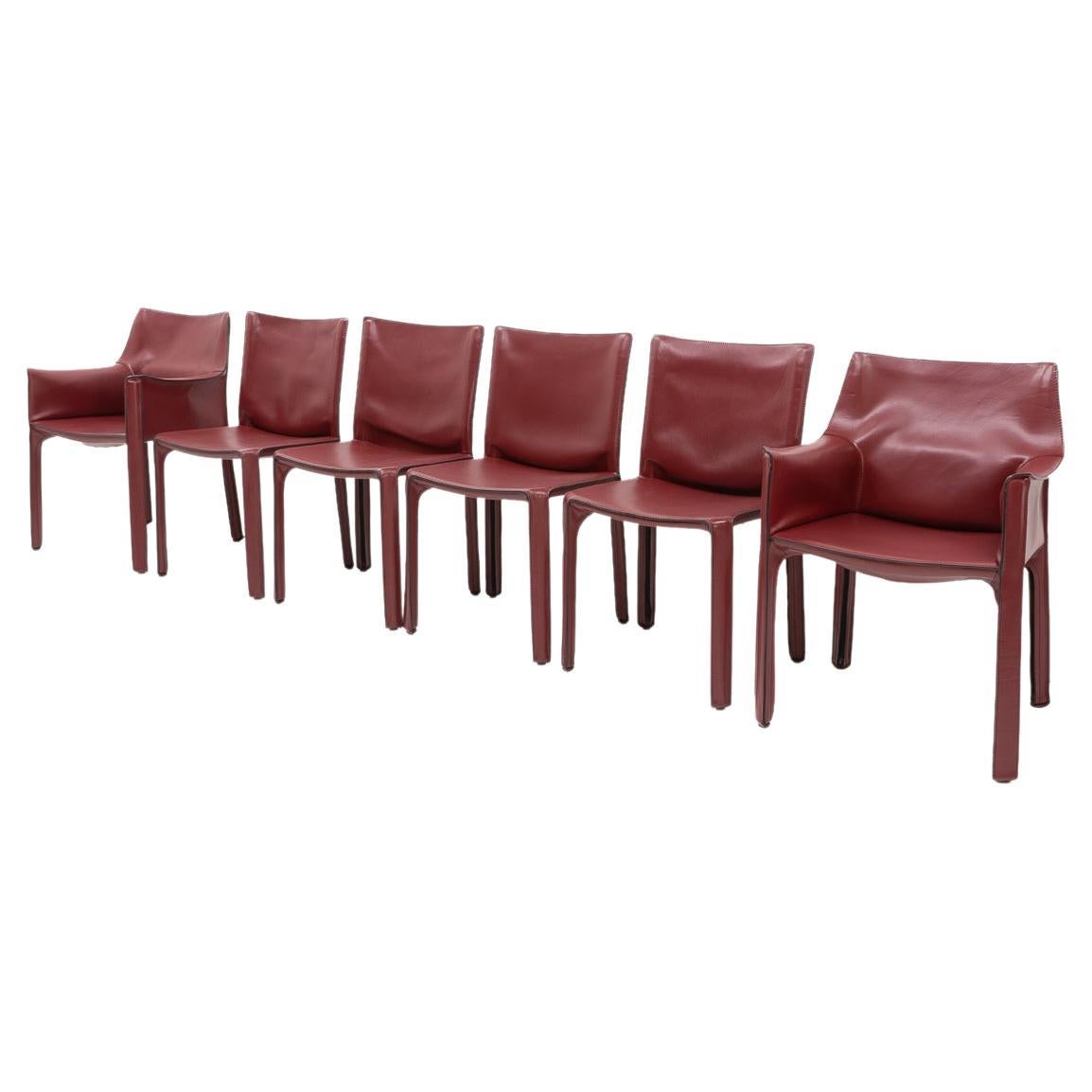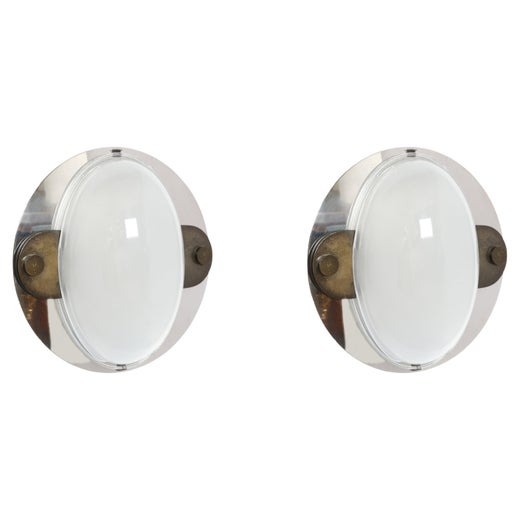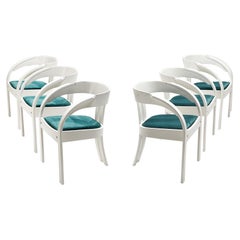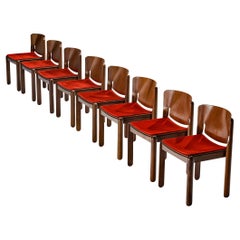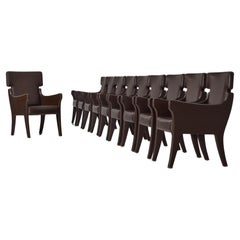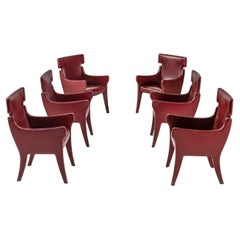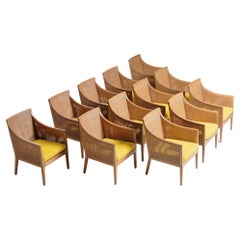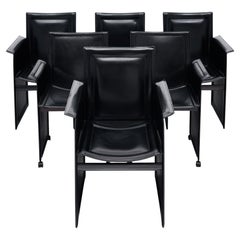Rare Ignazio Gardella for Azucena Early Set of Ten ‘R63’ Armchairs
À propos de cet article
- Créateur:Azucena (Constructeur),Ignazio Gardella (Designer)
- Dimensions:Hauteur : 90 cm (35,44 po)Largeur : 61 cm (24,02 po)Profondeur : 65 cm (25,6 po)Hauteur de l'assise : 44 cm (17,33 po)
- Vendu en tant que:Lot de 10
- Style:Mid-Century Modern (De la période)
- Matériaux et techniques:
- Lieu d'origine:
- Période:
- Date de fabrication:1960s
- État:Usure conforme à l'âge et à l'utilisation. Every item Morentz offers is checked by our team of 30 craftspeople in our in-house workshop. Special restoration or reupholstery requests can be done. Check ‘About the item’ or ask our design specialists for detailed information on the condition.
- Adresse du vendeur:Waalwijk, NL
- Numéro de référence:Vendeur : 501169901stDibs : LU933145344512
Azucena
Les meubles vintage Azucena sont élégants et accueillants - les célèbres du milieu du siècle du fabricant milanais appliques, fauteuils et tables d'appoint, marqués par une symétrie simple et des matériaux contrastés, se trouvent probablement dans les Living Rooms des amateurs de design de toute l'Italie.
Azucena a été fondée en 1947 par trois figures de proue de l'architecture italienne du XXe siècle : Luigi Caccia Dominioni, Ignazio Gardella et Corrado Corradi Dell'Acqua. Le trio a d'abord créé Azucena pour meubler l'intérieur des bâtiments qu'il avait conçus, mais il a trouvé une opportunité commerciale solide dans la fabrication de pièces individuelles à partir de ces collections pour les consommateurs de l'après-guerre. Et comme les fondateurs de l'entreprise ont emprunté le nom de la marque à un personnage fourbe de l'opéra de Giuseppe Verd Il Trovatore, il est normal que les meubles qui ont fait la réputation d'Azucena soient pratiques, mais qu'ils dégagent un soupçon d'espièglerie.
Le meilleur du modernisme italien combine l'impertinence et la fonctionnalité audacieuse avec un design provocateur et réfléchi, et Azucena est profondément enracinée dans cette tradition. Alors que ses tables à manger et ses tables basses empilables - créées par des personnalités comme Dell'Acqua et Vico Magistretti - sont exceptionnellement discrètes dans les petits espaces et encadrées par des lignes épurées, Dominioni a conçu dans les années 1970 des fauteuils massifs et enveloppants, recouverts d'un tissu rouge saisissant.
Parmi les créations les plus réussies et les plus emblématiques d'Azucena figure également le meuble le plus célèbre de Dominioni : la chaise minimaliste Catalina. Après sa présentation à la Triennale de Milan en 1957, la chaise Catalina, avec sa structure en acier émaillé aux courbes généreuses et son coussin en cuir moelleux, est devenue une sensation instantanée. Parmi les autres créations durables de Dominioni pour Azucena, citons la lampe Monachella, le fauteuil ABCD et l'ottoman polyvalent Cilindro.
Le fabricant de meubles italien B&B Italia a acquis Azucena en 2018 et a réédité un certain nombre de designs du portefeuille de la marque légendaire, comme la lampe Imbuto, le fauteuil Catalina et la table Cavalletto.
Sur 1stDibs, retrouvez le vintage Azucena éclairage, tables, sièges et plus encore.
Fondée en 2006, MORENTZ dispose d'une équipe d'environ 55 restaurateurs, tapissiers, conseillers en aménagement intérieur et historiens de l'art, ce qui en fait une galerie, atelier et studio de tapisserie d'ameublement, tout en un. Chaque jour, un ensemble de meubles du XXe siècle soigneusement sélectionnés arrive du monde entier à l'entrepôt de l'entreprise, où l'équipe examine minutieusement chaque pièce afin de déterminer les éventuels travaux à effectuer. Qu'il s'agisse d'une nouvelle tapisserie ou d'une restauration complète, l'objectif de MORENTZ est toujours d'honorer l'intention du concepteur tout en répondant aux souhaits du client. L'équipe est prête à relever tous les défis, de la restauration d'une seule pièce pour lui redonner sa gloire d'origine à l'ameublement d'un projet hôtelier de grande envergure.
- ExpéditionRecherche du devis...Expédition depuis : Waalwijk, Pays-Bas
- Politique des retours
Plus d'articles de ce vendeur
Tout afficherVintage, années 1960, italien, Mid-Century Modern, Fauteuils
Tissu, Bois
Vintage, années 1960, italien, Mid-Century Modern, Chaises de salle à ma...
Velours
Vintage, années 1960, italien, Mid-Century Modern, Chaises de salle à ma...
Velours, Noyer
Vintage, années 1960, italien, Mid-Century Modern, Chaises
Cuir, Frêne
Vintage, années 1960, Français, Mid-Century Modern, Chaises de salle à m...
Hêtre
Vintage, années 1980, italien, Postmoderne, Chaises de salle à manger
Cuir, Hêtre
Suggestions
Vintage, années 1960, italien, Mid-Century Modern, Fauteuils
Laiton
Vintage, années 1960, italien, Fauteuils
Imitation cuir, Mousse, Contreplaqué
Vintage, années 1970, italien, Mid-Century Modern, Fauteuils
Tissu, Rotin, Hêtre
Vintage, années 1970, italien, Mid-Century Modern, Chaises de salle à ma...
Métal
Vintage, années 1980, italien, Mid-Century Modern, Chaises de salle à ma...
Bois
années 1990, italien, Mid-Century Modern, Chaises d'appoint
Métal
